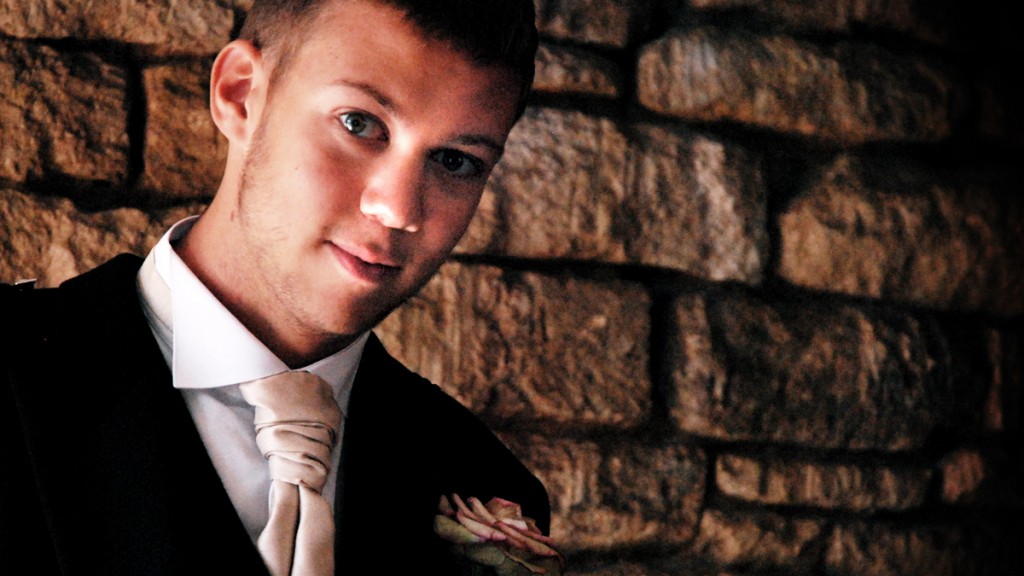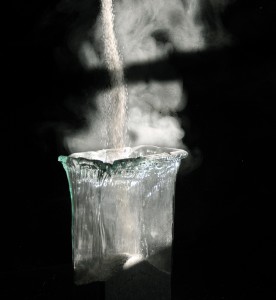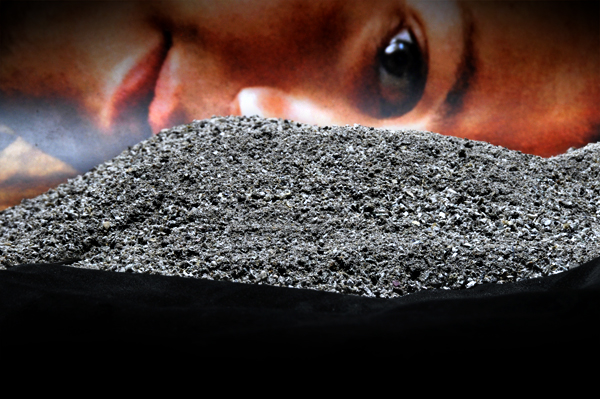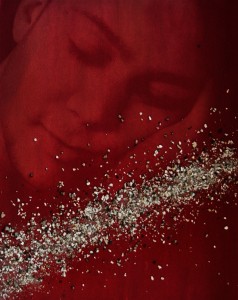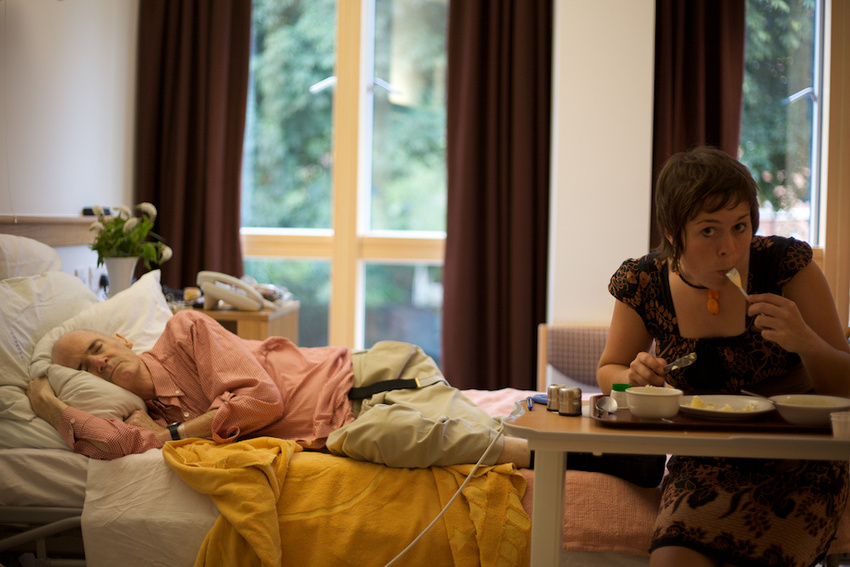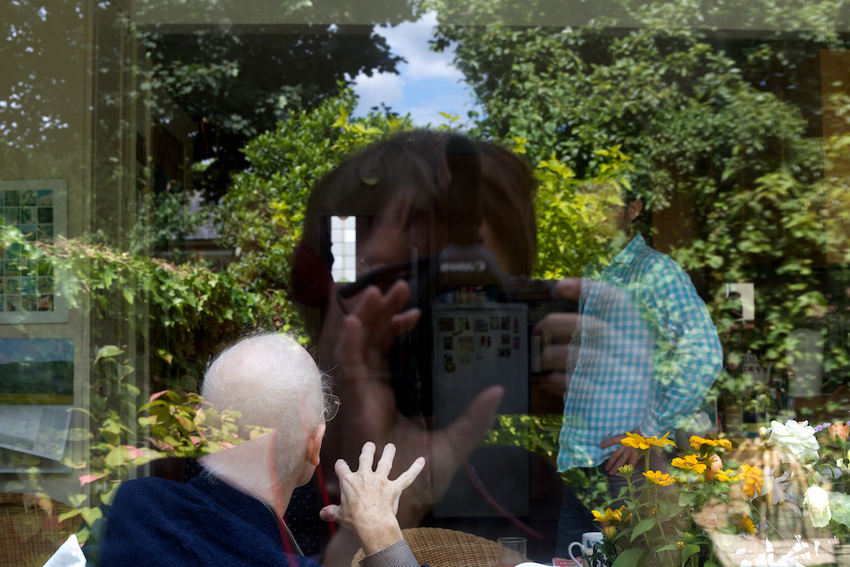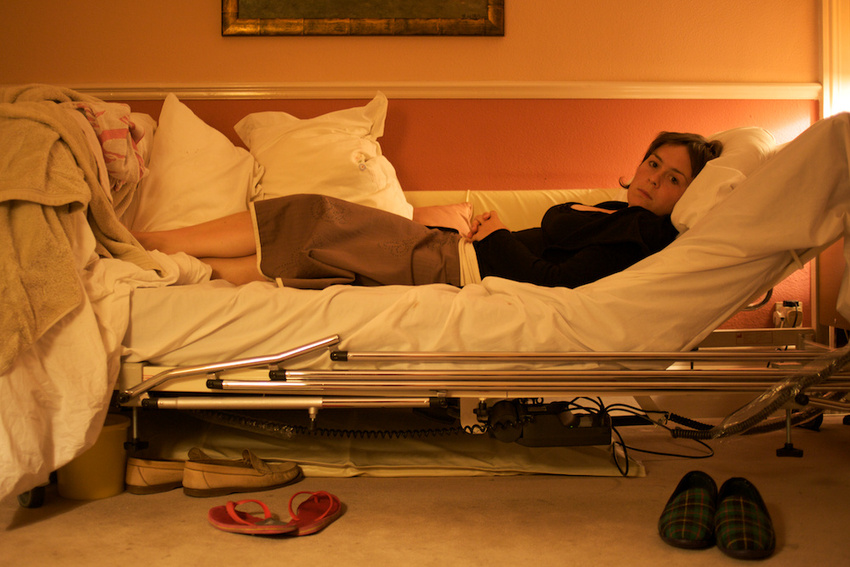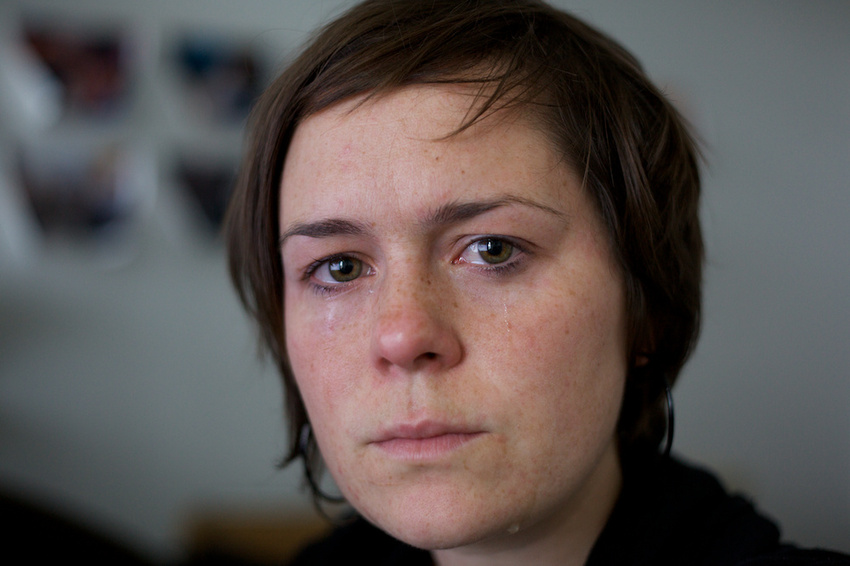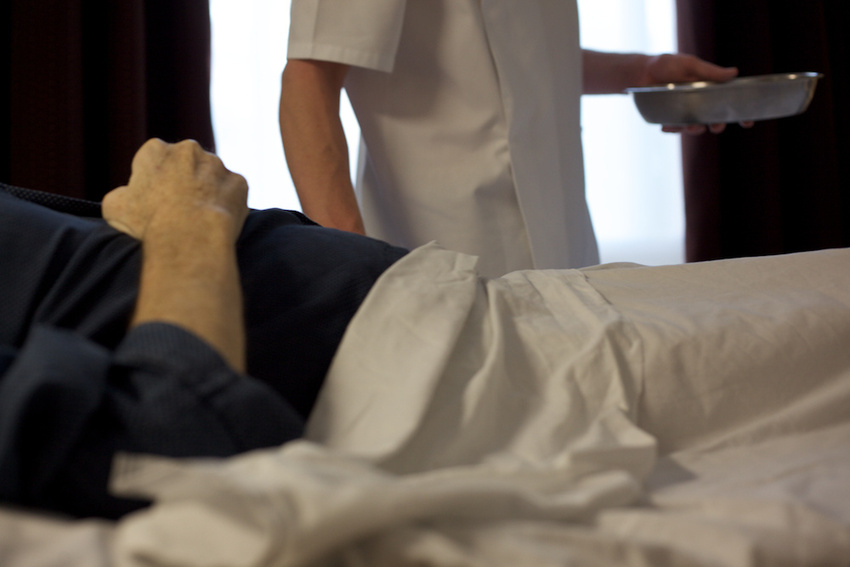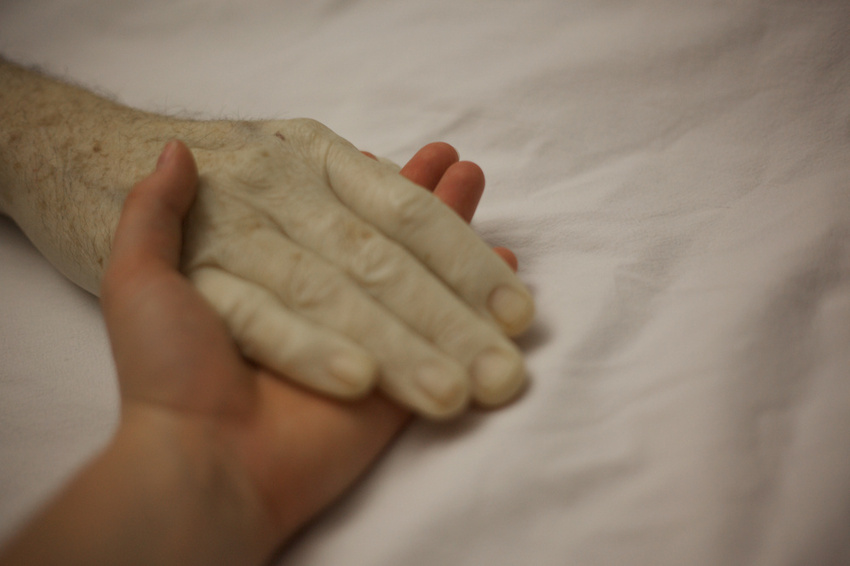“What’s the best thing that women have compared to men?”
“Nipples that work!”
My mum Emily had a  weird and wacky sense of humour and my brother Ned was first up at her funeral to reveal it.  Within minutes of starting his eulogy he had recounted an early joke of Emily’s that set the tone for an  evening of unexpected delights as we shared memories of our wonderful mother and grandmother.

Emily died while Jane and I were still on our travels in Central America.  We got the news while stuck on the border between Honduras and El Salvador.  The coach we were on was being searched for drugs and with an unexpected internet connection, Jane received a message that our daughter Rosa had tried to contact us.  We phoned her straight back.  Good or bad, significant news  always seems to be associated in my mind with a still image; like a photograph it remains imprinted on my memory bank yet often has absolutely nothing to do with the news itself.  With tears trickling down, I listened to Rosa’s account of her Granny’s last moments, while out of the side of the coach I watched a truck driver laboriously unpack the tarpaulin from his load in readiness for a customs inspection.  Like an image on a book cover this is what I see when I recall the news of my mothers death.  In the scheme of things two random events caught in my imagination – a man bent over struggling with the weight of his labours and my mother’s lifeless form in her bed at the residential home she had lived in for the past three years.   But this scene was all I had until we returned home a month later and I could visit her in the funeral parlour.   At which point the fact of her death became real … really real.   When we heard the news of Joshua’s death an image closely associated with that moment also has me looking out of a window and two police officers walk up our garden path.  It’s as if these images get stuck in time and the work of grief is to gradually erase them to reveal a truth that we can at last assimilate.   In any case I am a firm believer of viewing the corpse, not just as a way of helping us to recognise the unassailable fact that our loved one has died, but as a first step to rebuilding and continuing our relationship with them.


Relationships seemed to figure high in our speeches, eulogies and conversations at Emilys funeral – or celebration of life that many would prefer to call it. Ned and myself both referred to the idea that our relationship with Mum was “kind of complicated” – in that the way we were brought up, sent away to boarding school, and discovered new things about our past only after Dad had died.  These and other testimonies all started to build a picture not just of who Emily was but what she meant to all and each of us differently.
For grandson Joe it was childhood visits to their house in Sussex  where he discovered  “that old wooden box of brick dominoes that lived in the cellar.  Hours were spent constructing a domino rally down the winding stairs and through into the living room
Memories of signatured and scribbled words from generations past on wooden domino blocks… Wow, playing at Granny’s really rocks!
Joe’s most terrible rhyming puns would resonate for many; Emily’s unlikely love of snooker on the telly elicited this
Dozing off in the armchair was sheer heaven, We’d never quite stay awake for the big break 147.
For grandson Jonny it was Emily’s warmth:  “a warmth of welcoming visitors and those she loved dearly.  The kettle was put on, the biscuit tin was stocked, the table was set – even the breakfast table.  If you were a vegetarian, she found it slightly amusing and somewhat confusing – “not even some black pudding, Jonny?â€Â
And he recalled another of Emily’s favourite jokes – one that we have all heard over and over again and will continue to enjoy, not for any intrinsic hilarity in the joke, merely because it is and always will be .. sooo Emily –
“Why does a frenchman only have one egg for breakfast?”  “Because un oeuf’s an oeuf!” Â
Granddaughter Claire read from a letter her granny had sent in which she made reference to the Australians seeming inability to laugh a themselves – unlike ‘us limeys’.  Written in 2000 her letter reveals the first signs of the dementia that would take hold of her in the years to come.  She had just moved to be closer to us in Chalford and writes “space is limited and I only have one bed I can shove things under.  The fridge is so small beers and cokes have to go under the dresser but having packed everything away I have difficulty remembering where I put things…”
Jane had been looking for photographs of Emily and came across a postcard that Josh had written to his gran from Vietnam.  “Hi Gran, Josh here!” (we always asked people to announce themselves at the beginning of a letter or card)  “travelling is one of the most amazing things ever” he continued “it is tough being on my own but I am learning so much and meeting loads of people all the time”    The postcard was unsent and had come back with the rest of Josh’s belongings; it now reminded us in the most poignant way how important Emily was to all her grandchildren.



All these contributions speak to a relationship as much as they do to the person.  Joe’s experience of playing at his Granny’s house, Jonny’s enticement for us all to remember and share in the joke, Jane’s reading of Josh’s desire to connect with his Granny and tell her his news and Claire’s precious airmail.
Along with film clips, photographs on the walls and on the screen, we had built a small ‘set’ – a replica of Emily’s front room with her chair, her knitting basket, todays Times crossword, a bowl of humbugs, all her actual stuff but triggers to memories and the life that once was. Â Forget multi media, this was ‘interactive’ in the best possible way as people took turns to sit in her chair or add their own memories – a scrabble bar with the word ‘twitten’ – meaning ‘alleyway’ or path between two hedges and specific to our home county of Sussex (and a good score in scrabble apparently as it uses all seven letters). Â Emily was a wizz at the Times crossword and would normally finish it by nightfall – today’s remains only partially completed!



So in a very real way, mourners for Emily were able to recall not only their memories of the person, but to actively engage with the space in which she lived – a truly visceral experience to be remembered in its own right and carried with us as part of our on going connection to her.  But it was also fun, really good fun which had Josephine (at just two and a bit, our youngest mourner) unravelling a ball of wool as she wandered around the guests and plenty of laughs as we watch clips from the film I had made in 2007 which featured Emil and her friend Yvonne discussing life after death and getting stuck in the lift.
Another departure from the norm (though this only became apparent to us afterwards) were the volunteers of the bearers for Emilys casket – we had the men carry her in and the women carry her out, something many remarked they had never seen before.  And for Jane in particular a special moment; one she would not have been comfortable with had she not been so up close and personal to death these last few years. Coming from a family where the D word was never mentioned, helping to carry Emily’s casket was for her a kind of rite of passage - she felt that there was something so primitive and powerful about this part of Emily’s journey being in the hands of women.
My beautiful mother then spent the night in our living room, an honour that meant so much for us. Â Our home is closest to where Emily lived for the last 15 years and it only seemed right and proper that we should host her one more time.
Again to have a dead body in your living room feels a bit untoward in this day and age – I don’t know why given what an ancient tradition this is.  In days past you might even have invited a photographer to make an image of the dead person such was the lack of squeamishness about these things.  You certainly wouldn’t have balked at having an open coffin.   For us it meant a wee bit of alone time in which we could lift the lid and say one more ‘goodbye’, to acknowledge that in the stillness and the coldness of her frame,  yes she really is gone but also in that very stillness, in her deadness our relationship though changed could still be very much alive .. my mama, my mama, my mama …
I think we had got to know my mum particularly well in the last chapters of her life (certainly in a completely different way from when we were children)Â Â including the years in which the dementia progressed, years in which even while her memory and her capacity dimmed, her straight talking, her self effacement and her humour always shone through –
Emily may well have long fallen out of love with life, but her love for us never died. Â If only we could have honoured her dying wish of putting her in the oven with as much flair and bounce as we’d managed at the celebration of her life though how we could have done that does stretch the imagination.
The service at the crematorium the next day was a more solemn affair – but by having two ceremonies we bucked a certain trend articulated by Su Chard the celebrant who did for both Josh and Emily – importantly we had separated two necessary (but normally conflated) rituals attendant at someones death: the funeral and the disposal of the body.
Thanks for reading
Jimmy
January 2016
This post appears both here on BEYOND GOODBYE and on our blog for The Good Grief Project
(for Su’s ideas on the nature of contemporary funerals see our film Beyond Goodbye )
and here is a short (i.e. edited) conversation between Emily and Jane that should amuse … recorded on her phone in Steppes, the residential care home she lived in for three years.
We’d like to thank Harriet Lewis for the wonderful Paella that rounded off the evening and James Kriszyk for some great photos of the day.


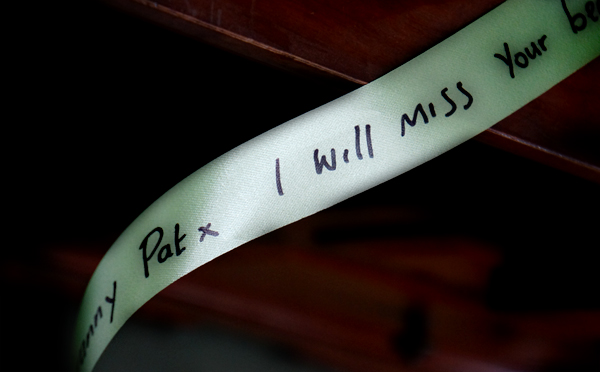
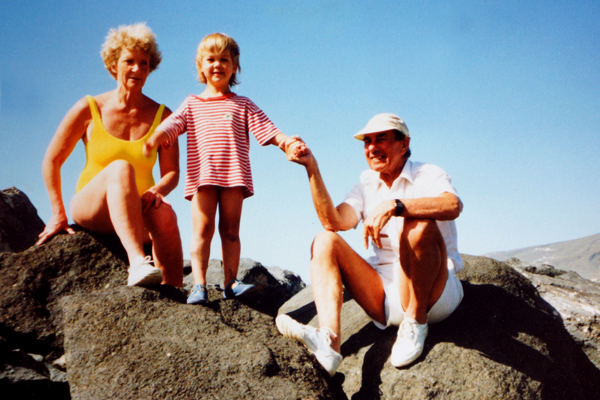
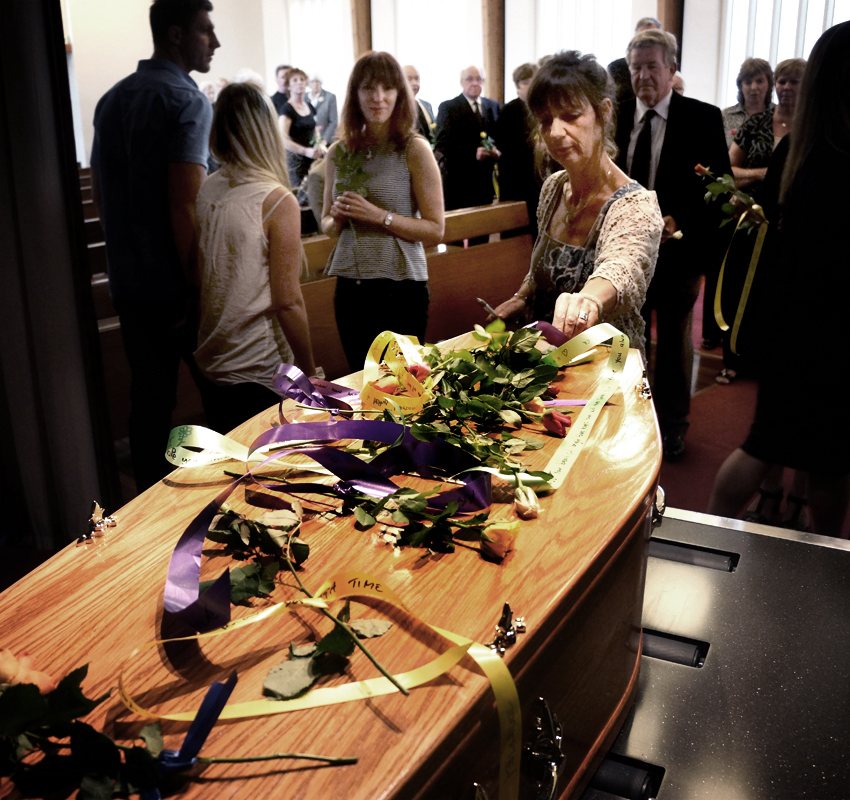


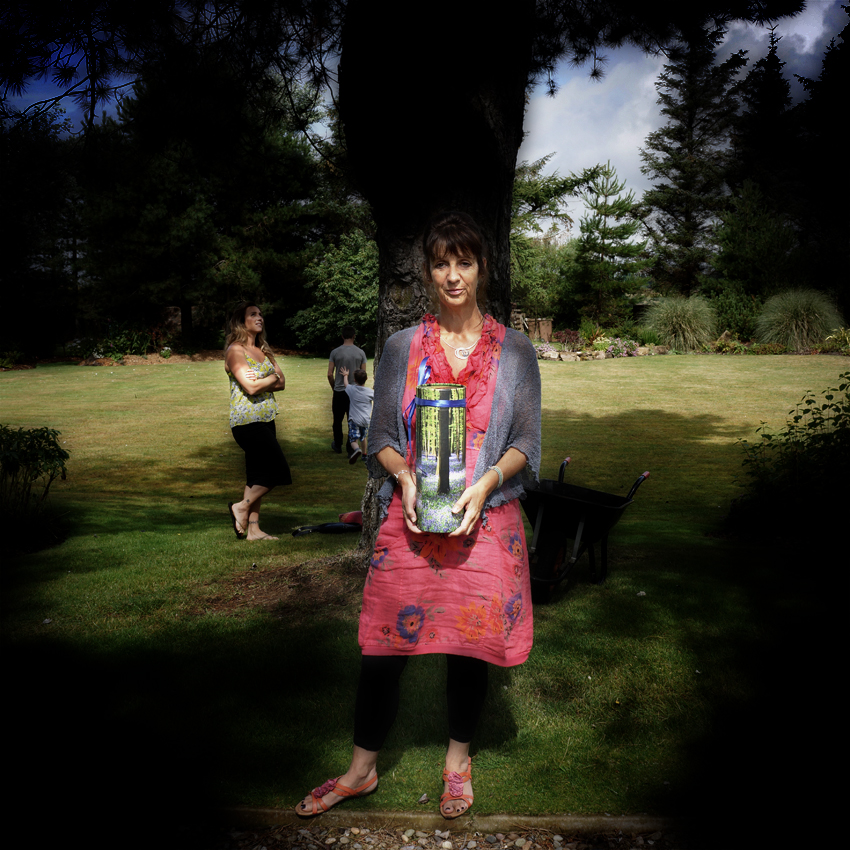
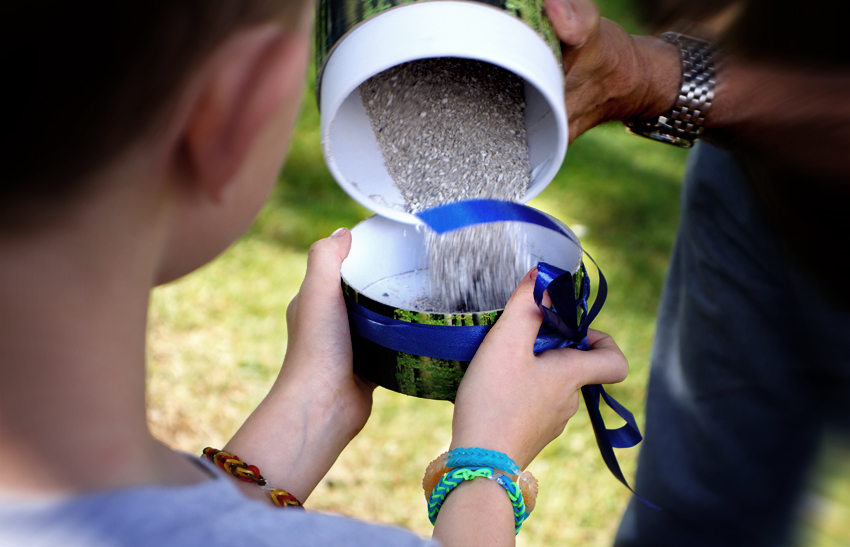





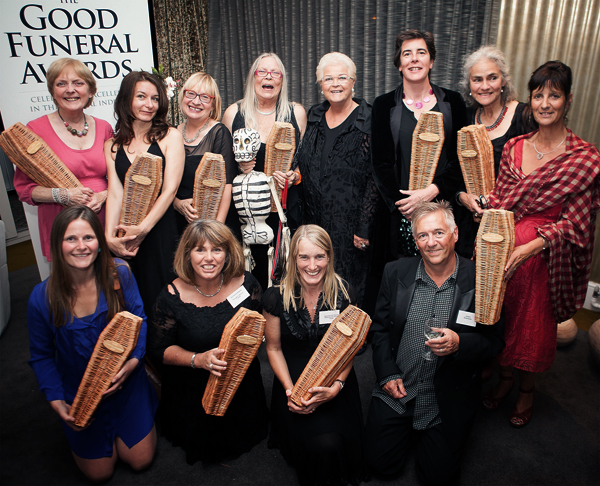

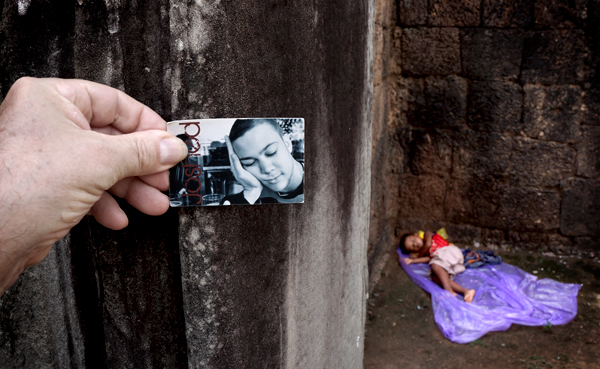


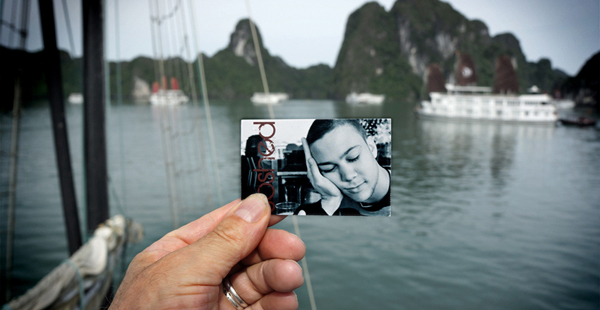


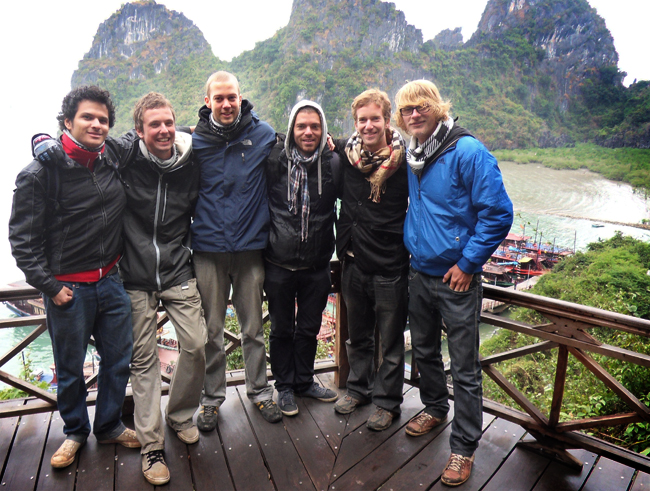

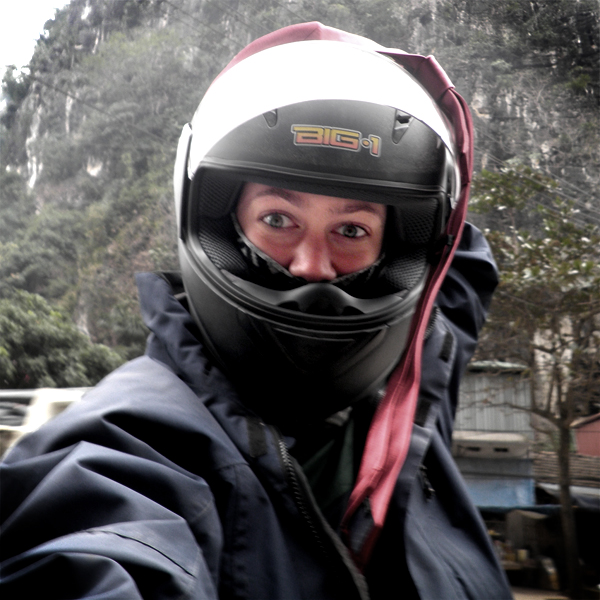

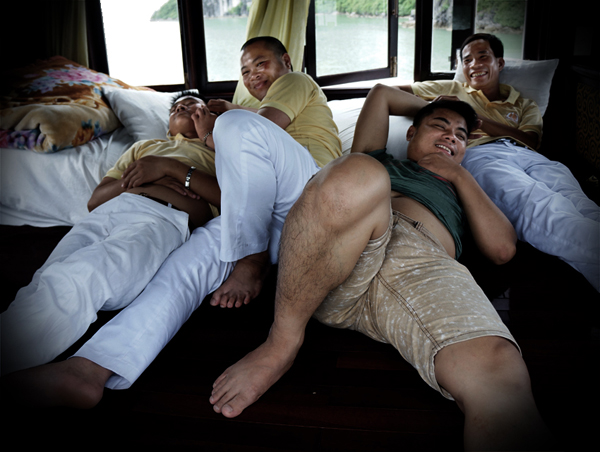

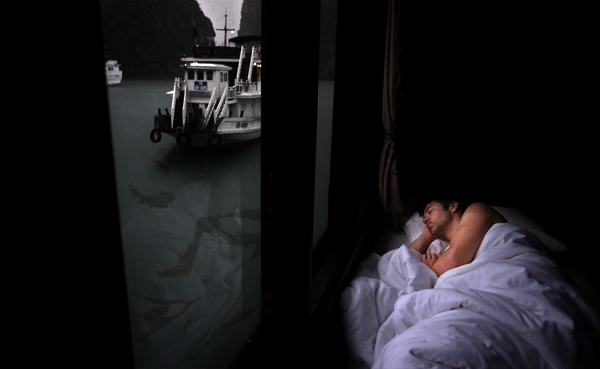
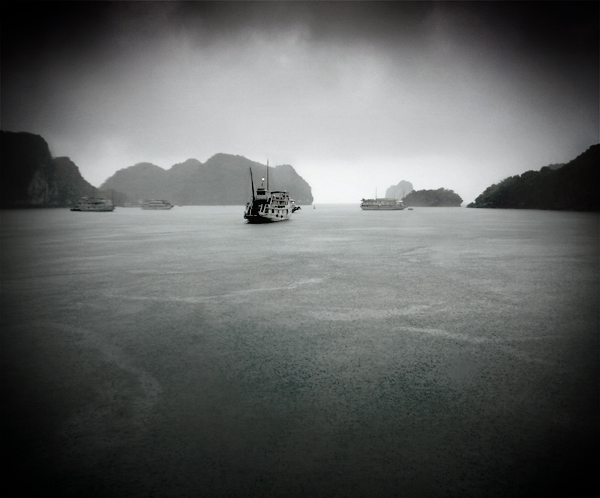



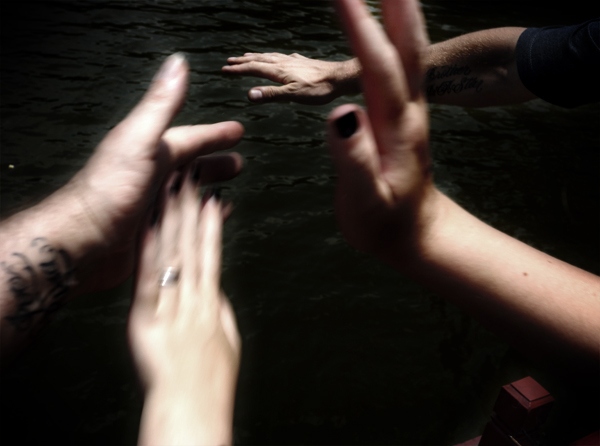
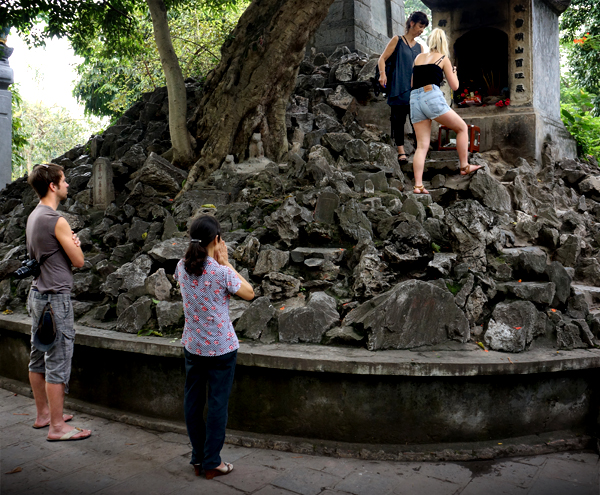
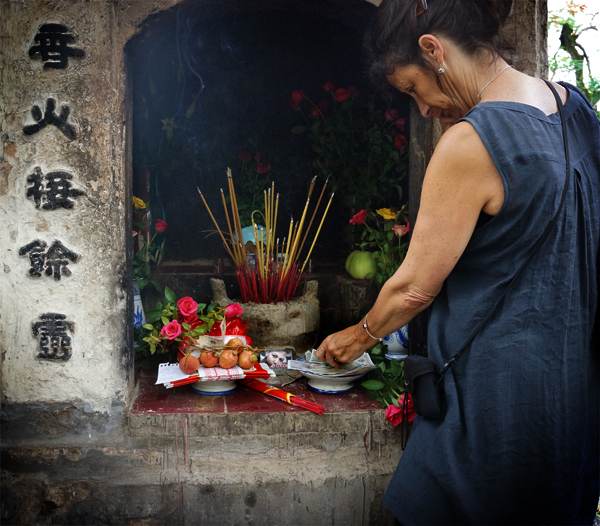
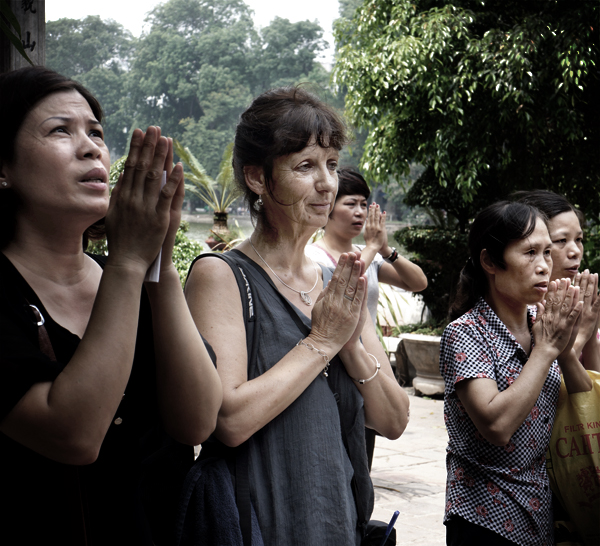
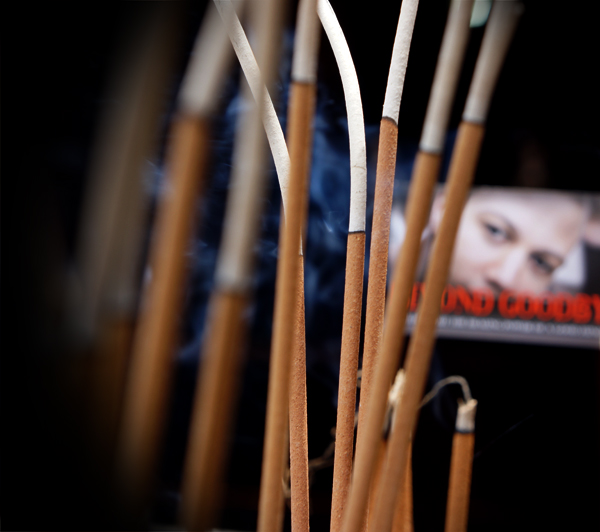

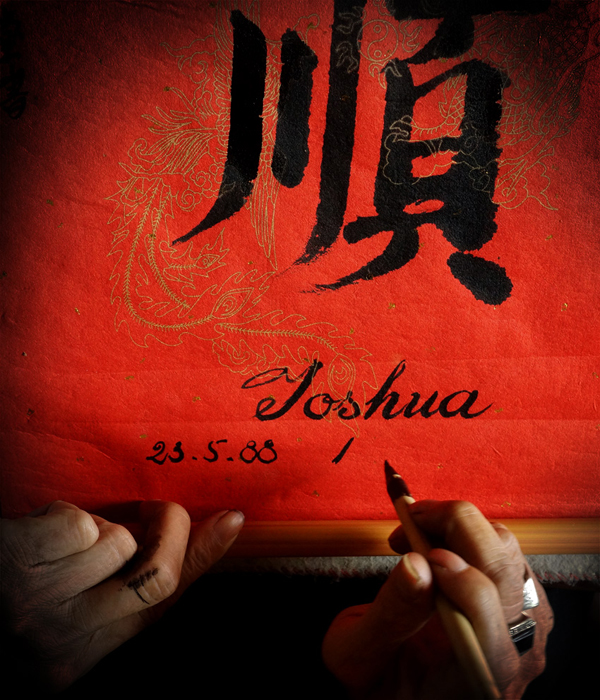
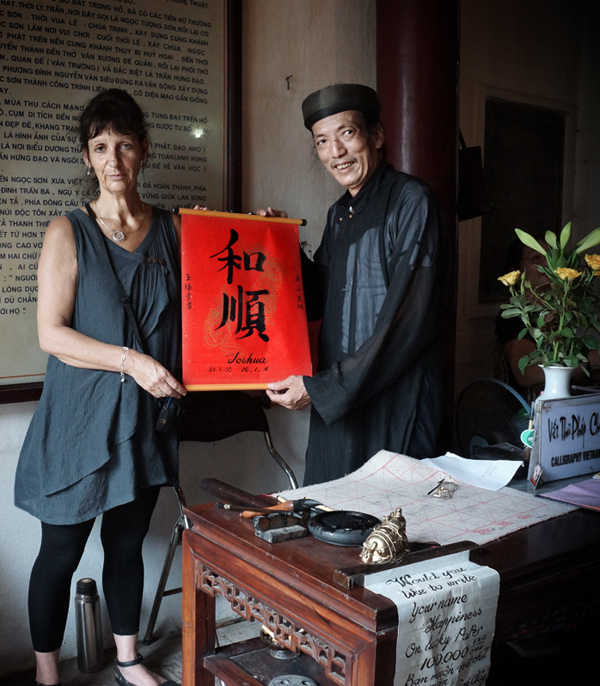

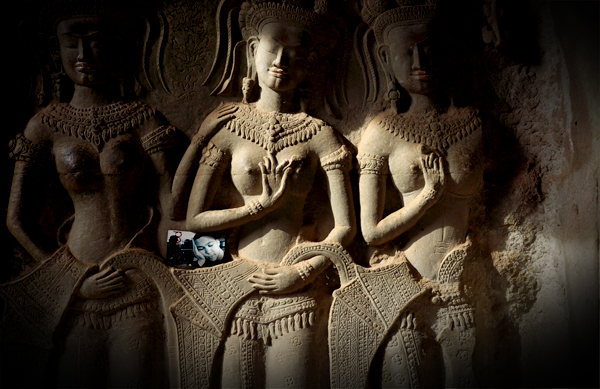

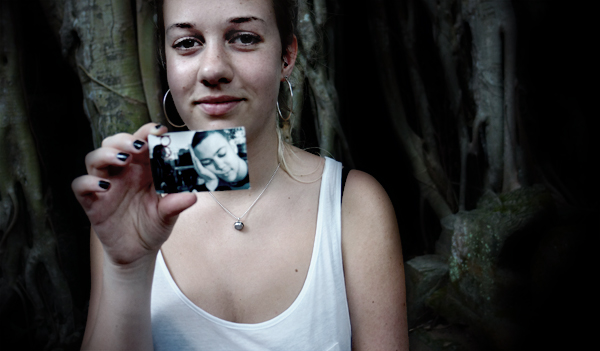


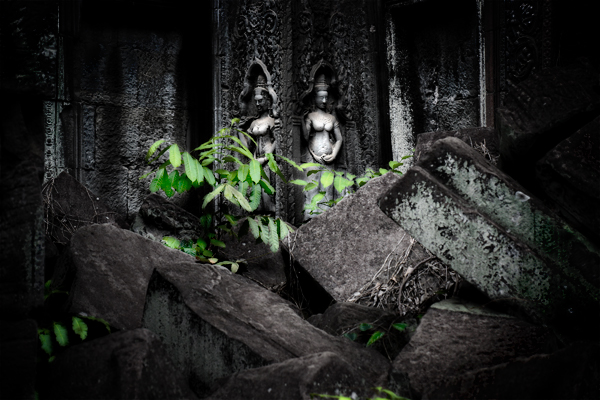
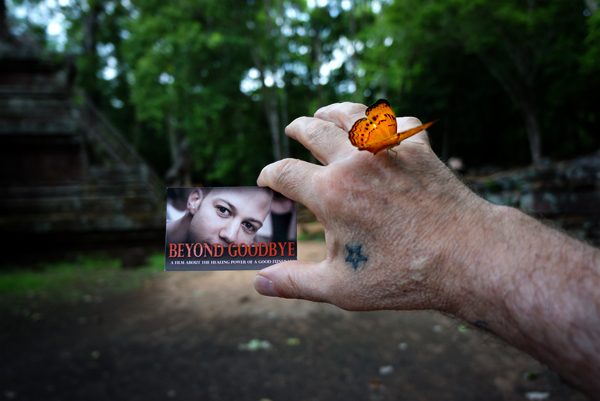
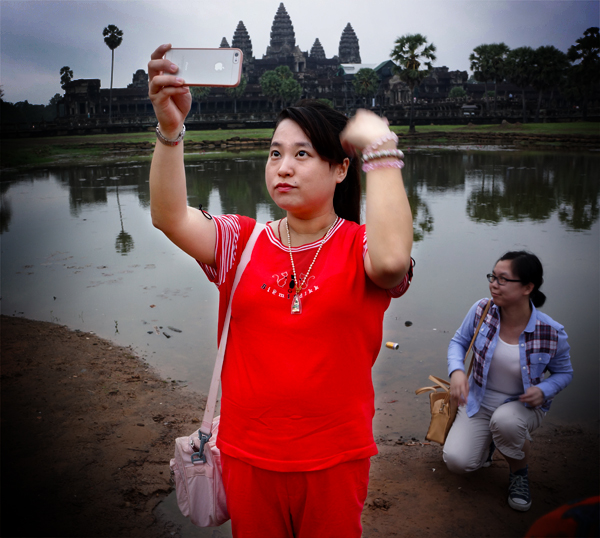

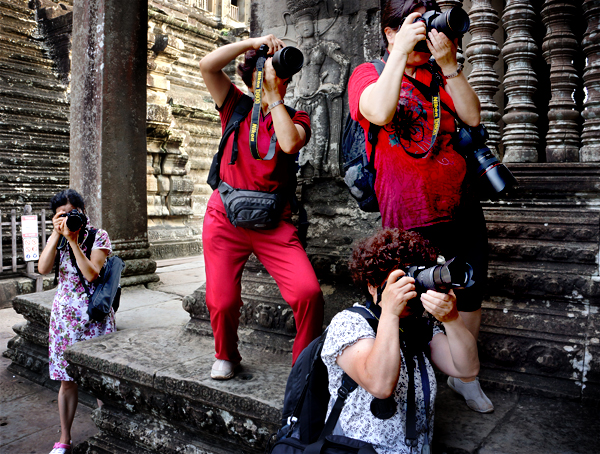

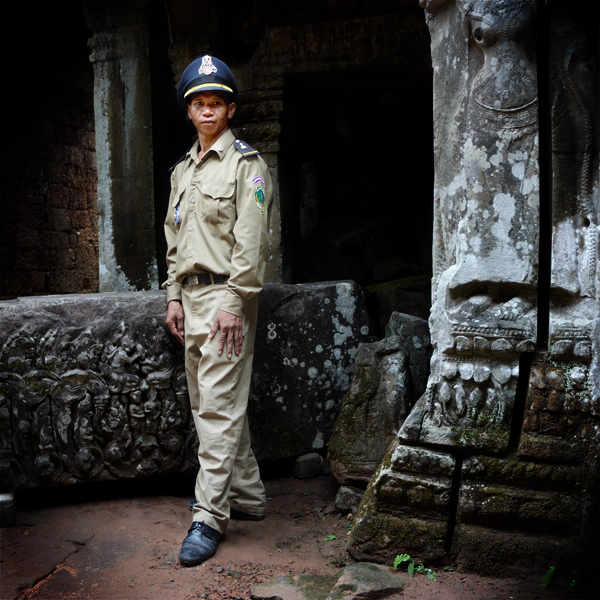

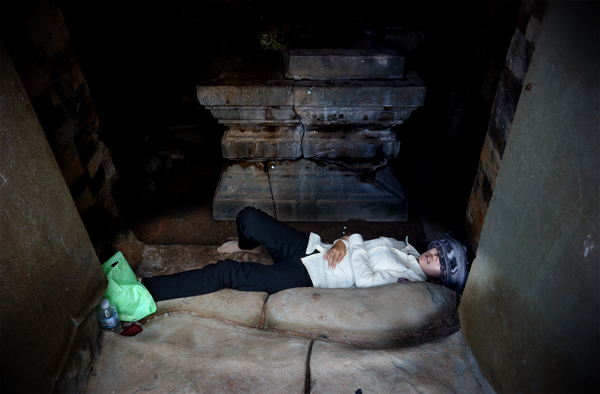

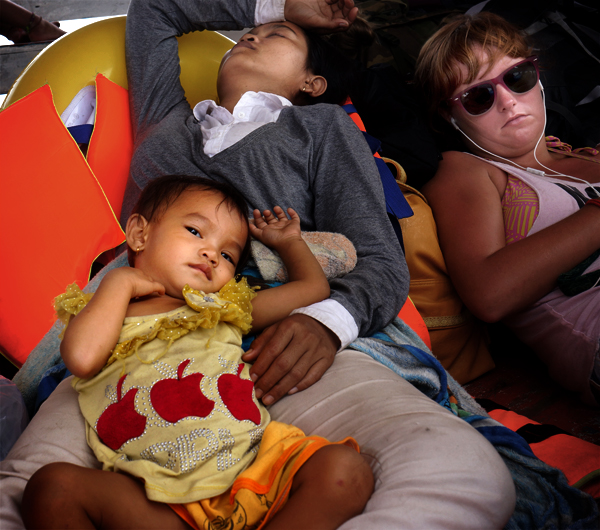
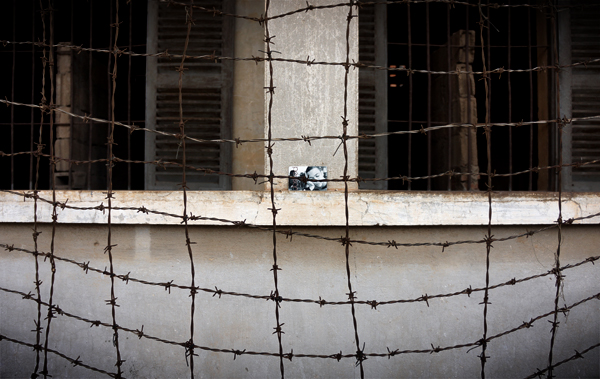
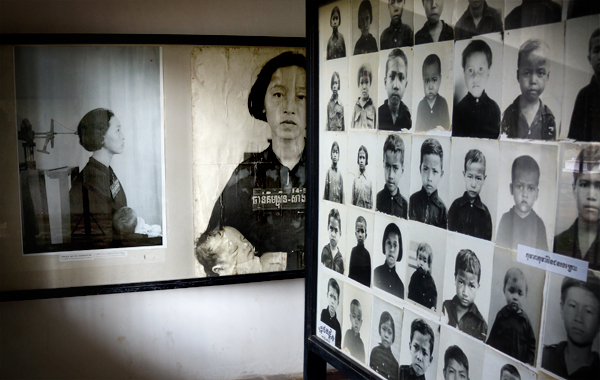

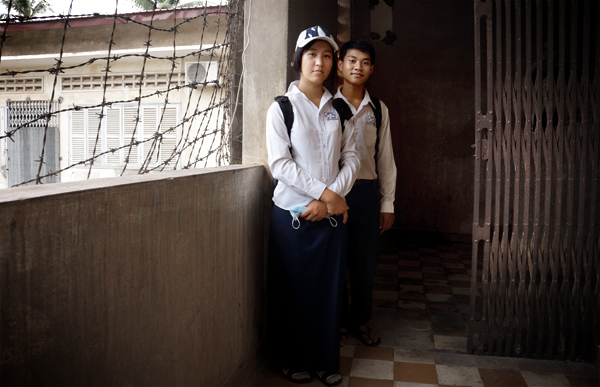


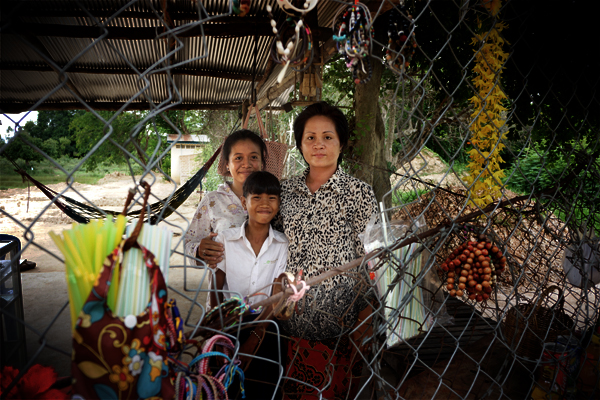

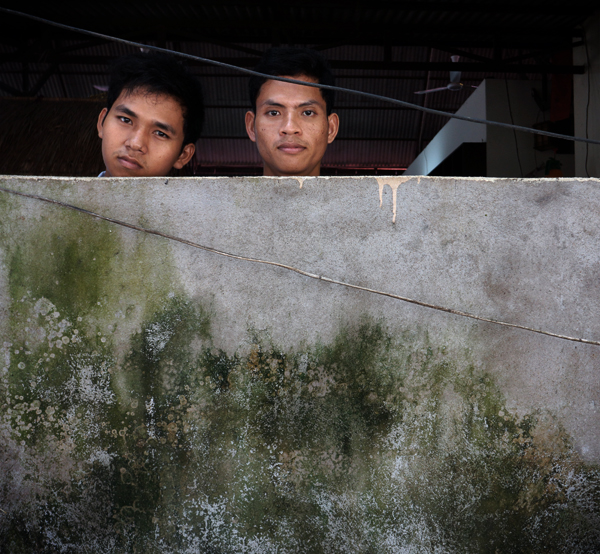
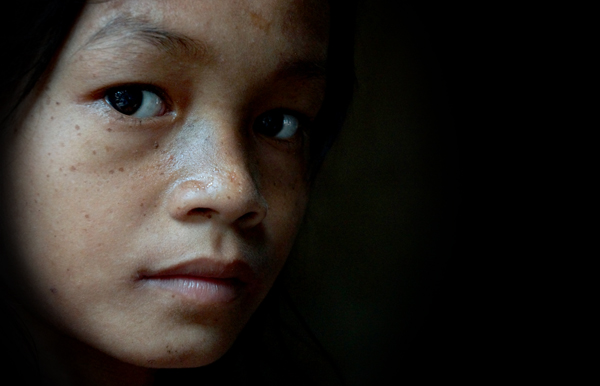

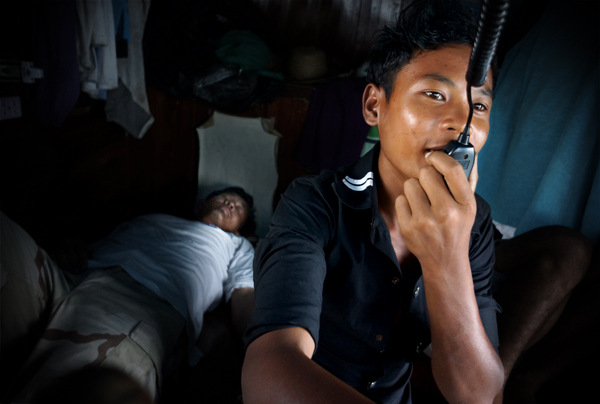



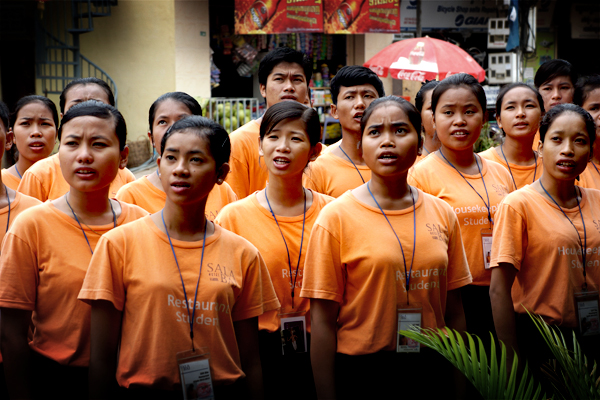
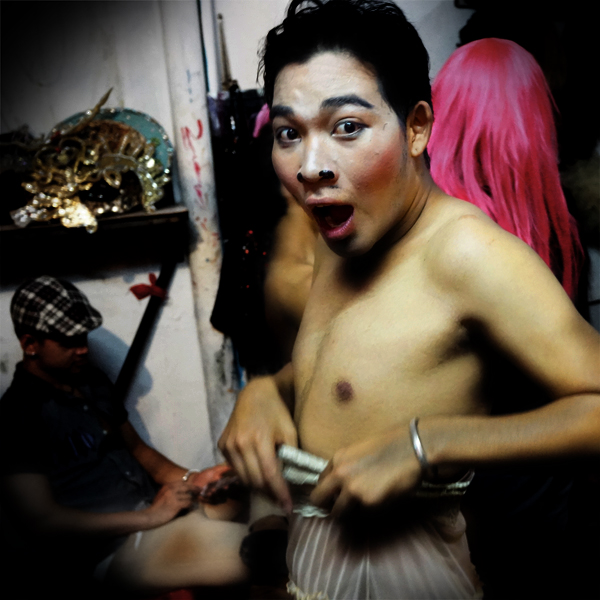

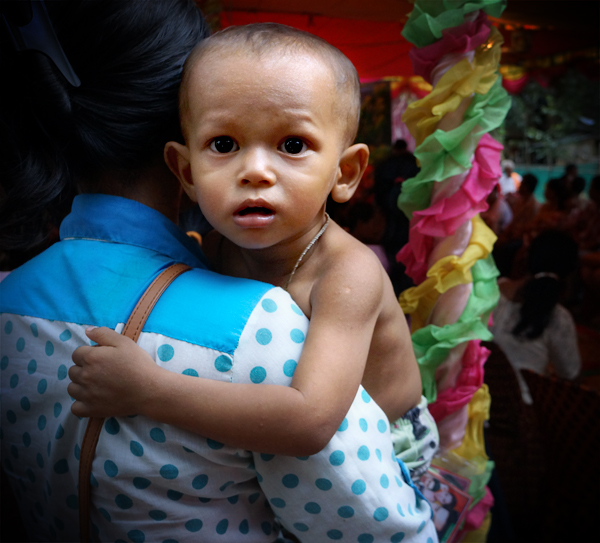

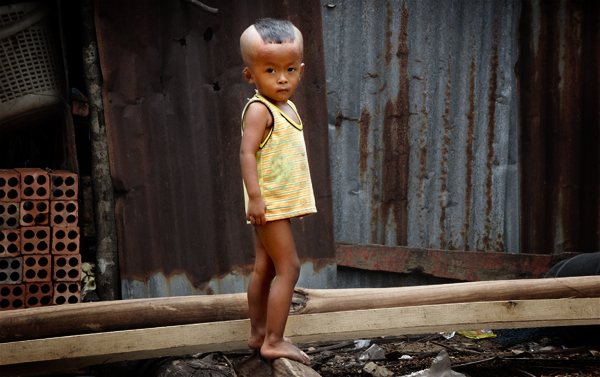
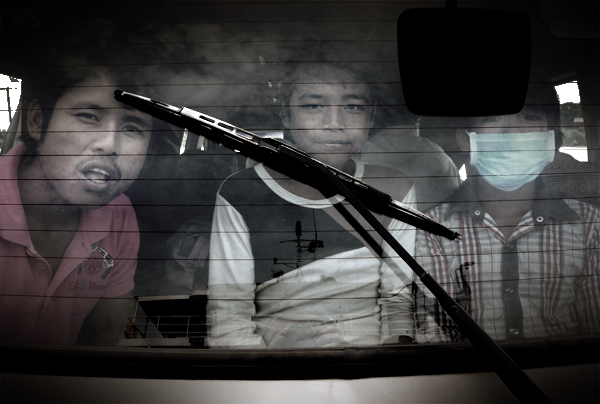
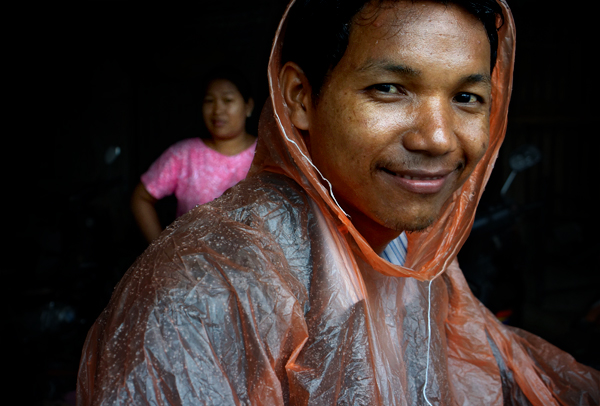

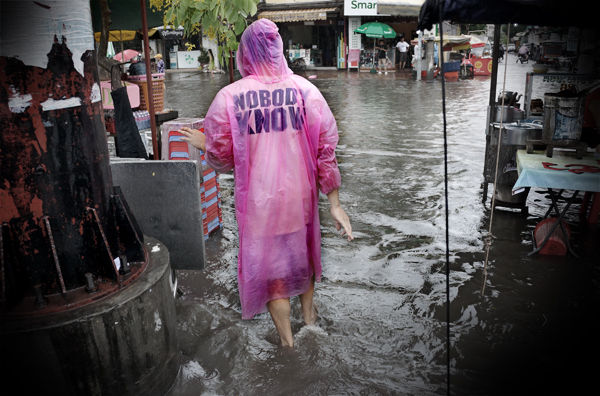
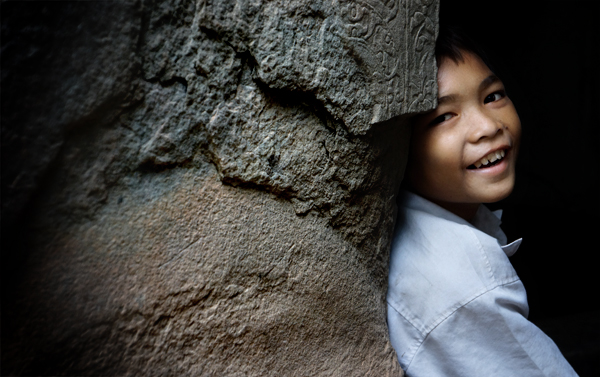

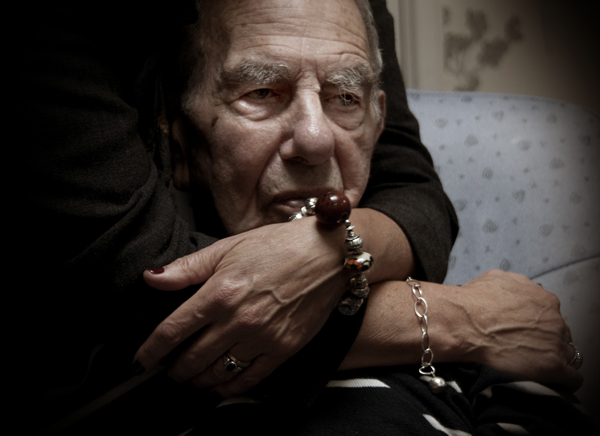

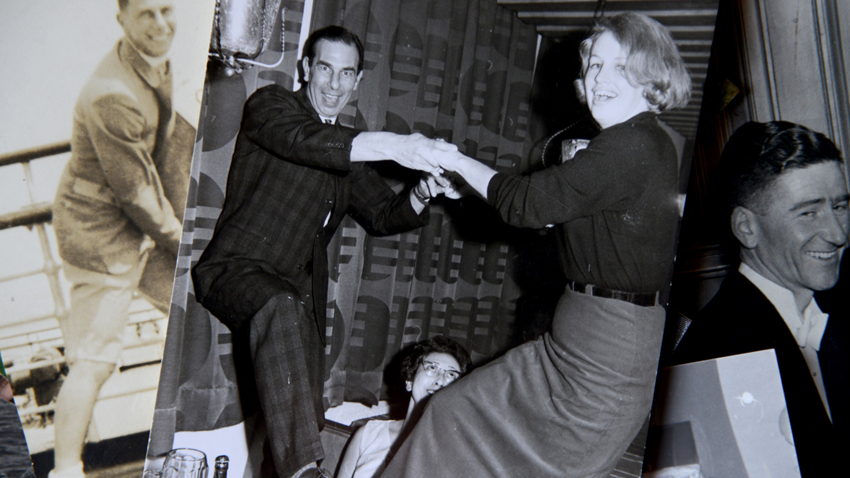

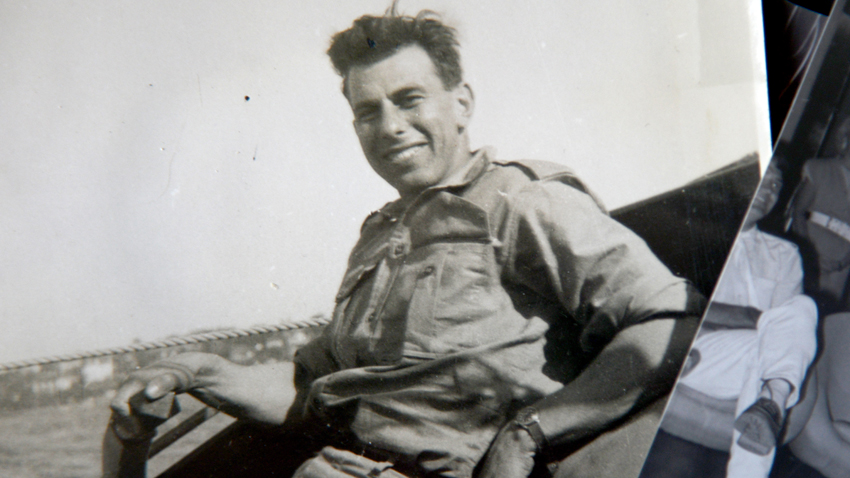


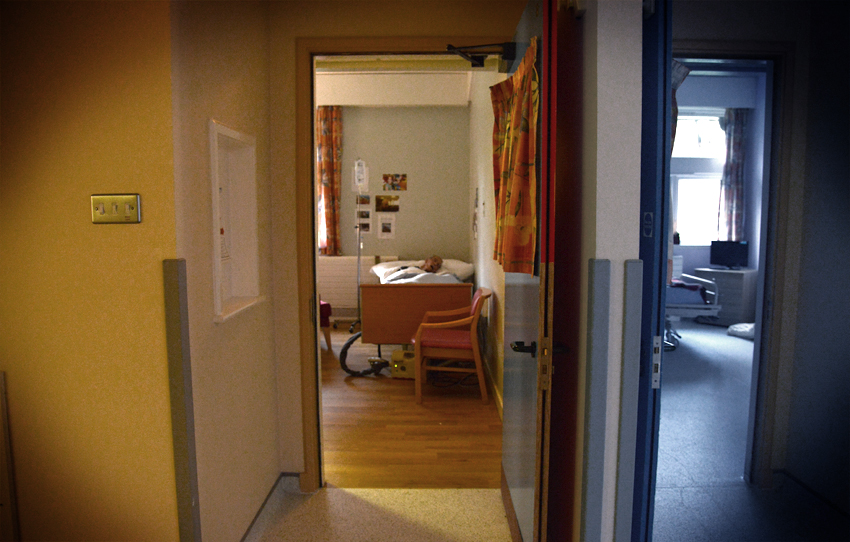

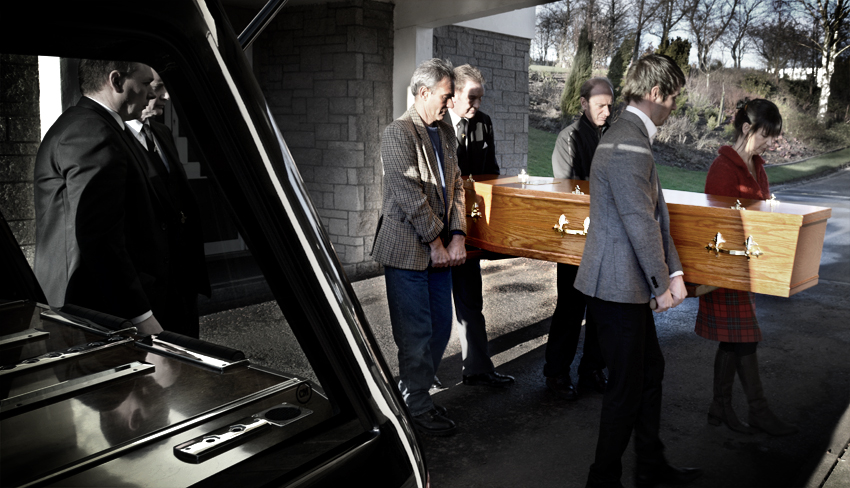

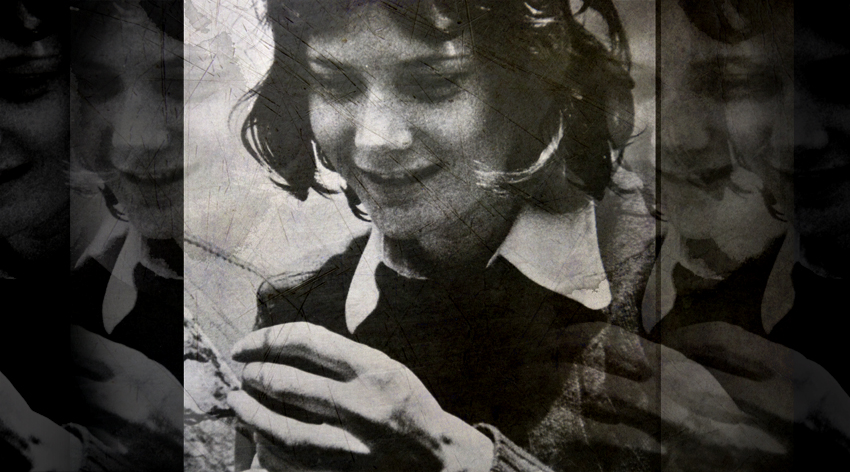

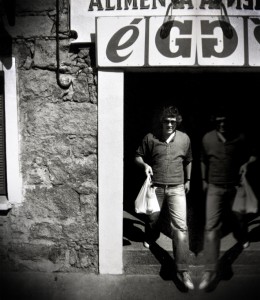
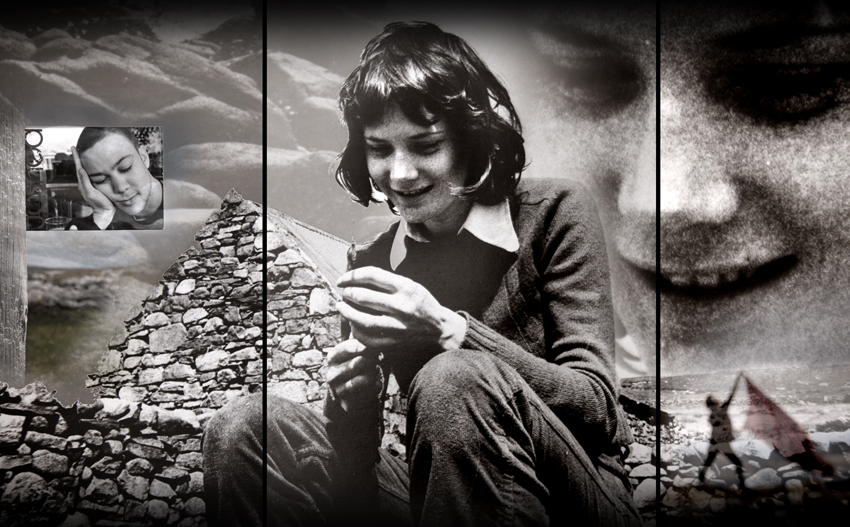
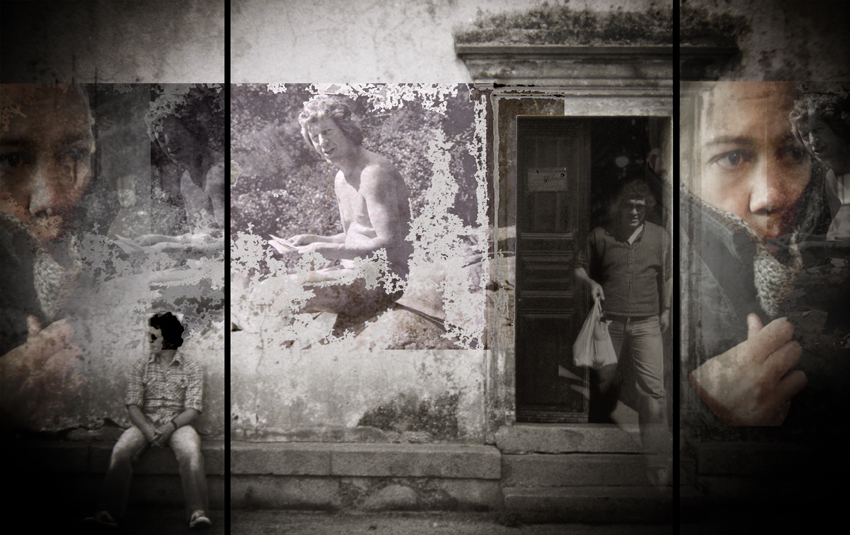
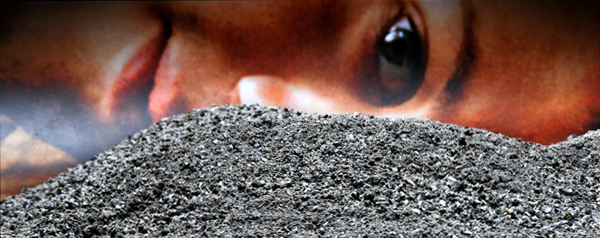
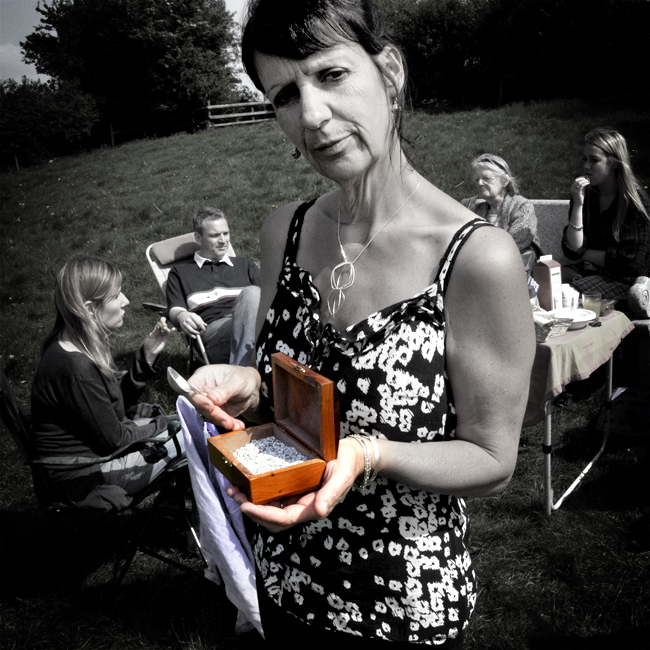

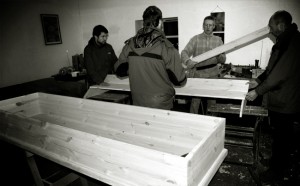

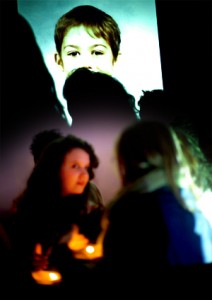
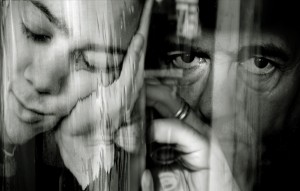
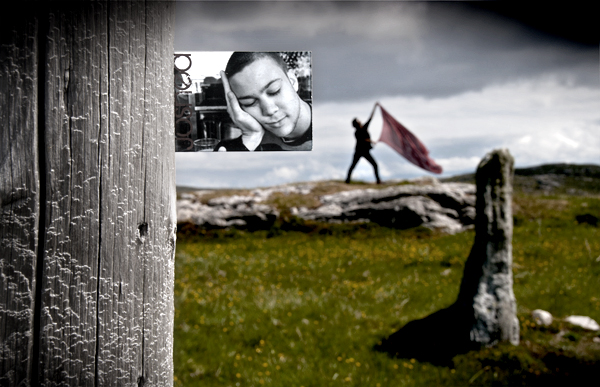

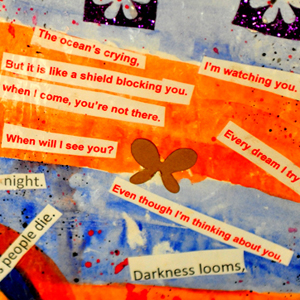
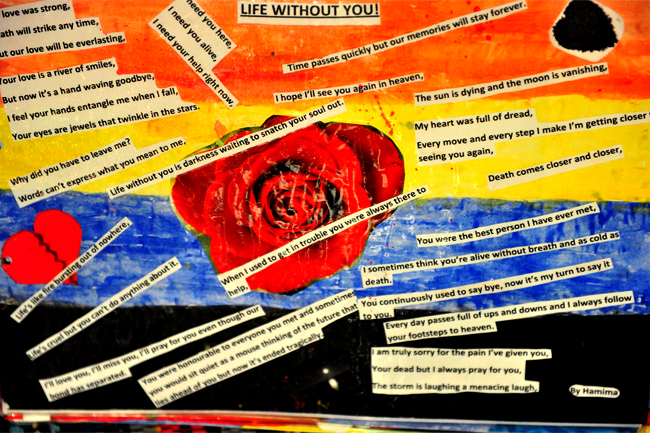
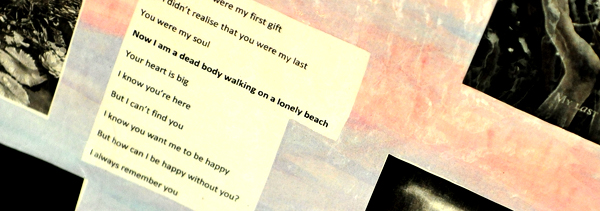

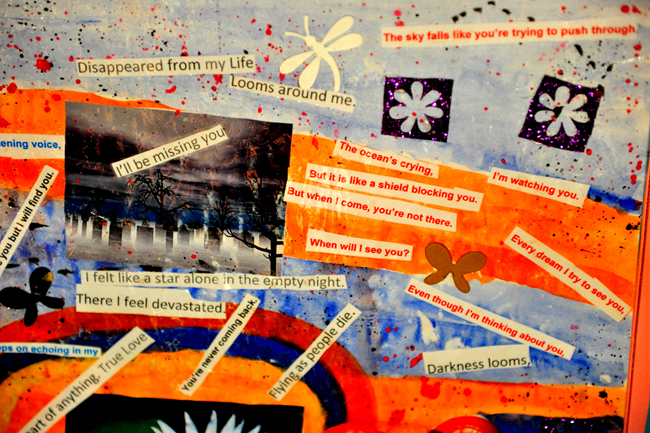

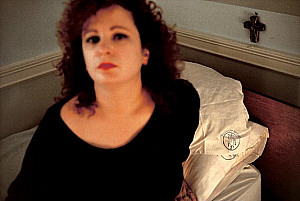





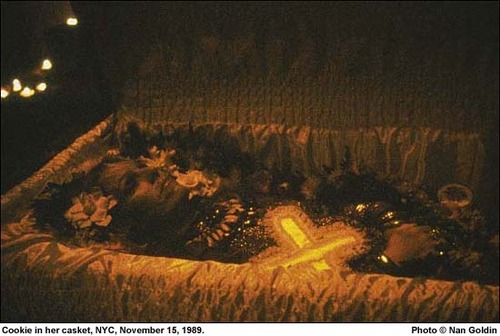


 Above – the photograph Josh used for his business card
Above – the photograph Josh used for his business card